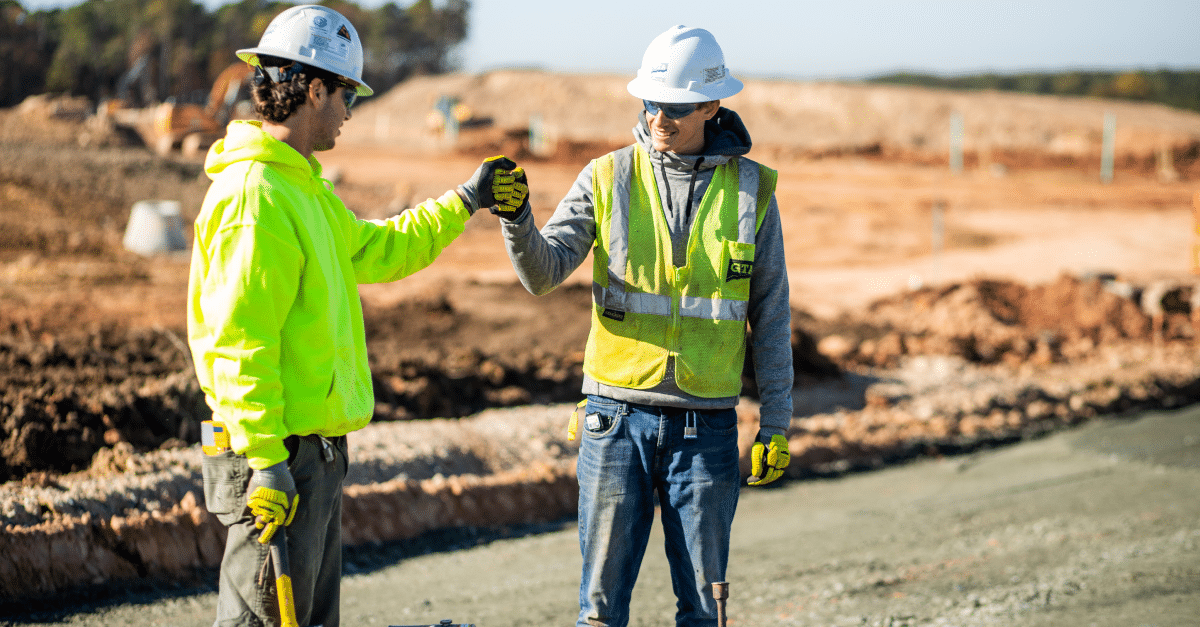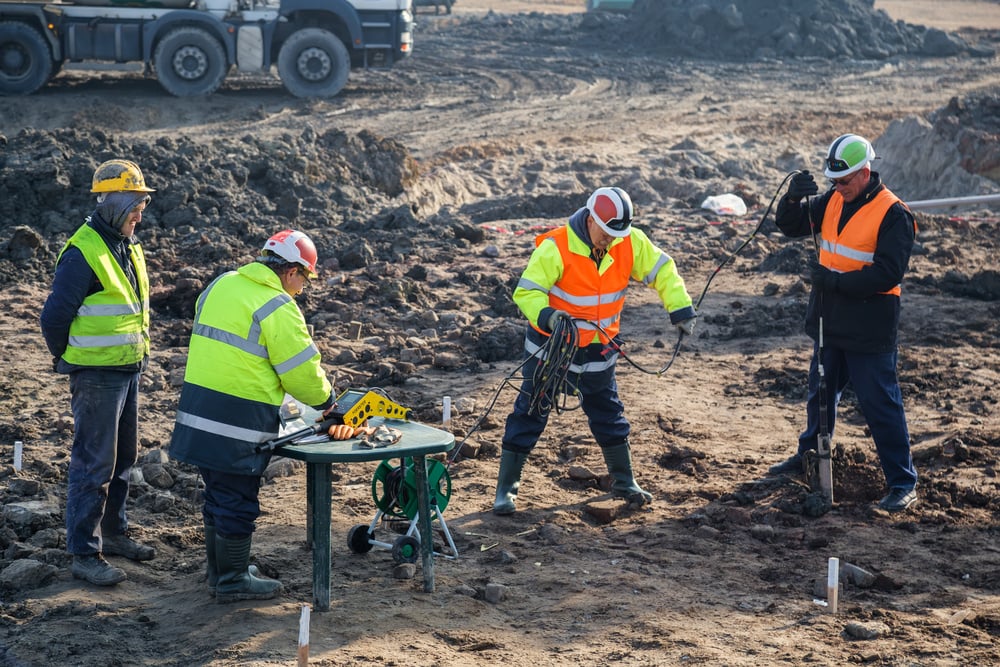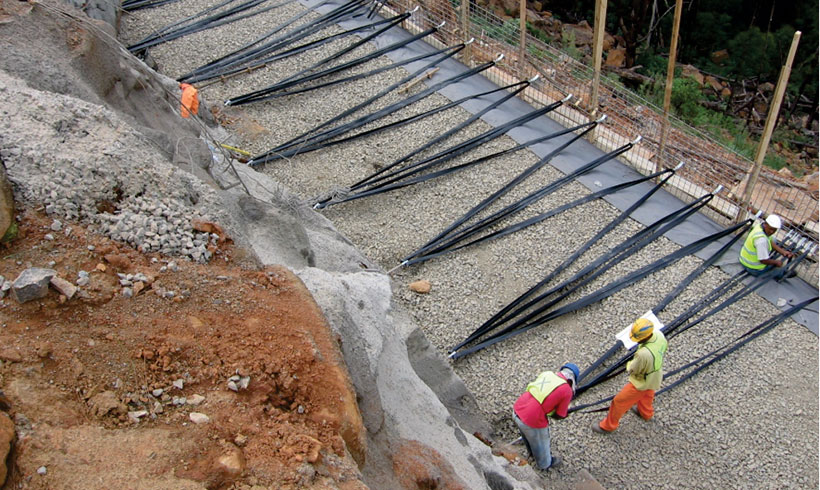The Of Geotechnical Engineering For Construction Projects
The Of Geotechnical Engineering For Construction Projects
Blog Article
Get This Report about Geotechnical Engineering For Construction Projects
Table of ContentsThe Of Geotechnical Engineering For Construction ProjectsMore About Geotechnical Engineering For Construction ProjectsThe Main Principles Of Geotechnical Engineering For Construction Projects More About Geotechnical Engineering For Construction ProjectsSome Known Questions About Geotechnical Engineering For Construction Projects.
During the investigation, it is vital to pierce at the needed depth and the needed number of holes as per the referral of the Canadian Foundation Layout requirement. In some cases, the owner might conserve some Geotechnical Examination price however wind up investing greater than the anticipated throughout the building cost.The duties of the geotechnical expert entail giving product screening for building assistance. Geotechnical Engineering for Construction Projects. Geotechnical designers analyse all the area examination records to guarantee that construction is going on based on the job spec. Throughout construction, a confirmatory test for soil compaction is done on-site to ensure that no future settlement happens
After the concrete is poured -7 days and 28 days- tests are performed on concrete samples accumulated from the site to make certain that the concrete put fulfills the design criterion. Asphalt core is taken after the Asphalt is laid and compacted to validate that it satisfies the style standard. All lab examination records are analysed by the Geotechnical Designer to guarantee that it fulfills the task spec.
Examine This Report about Geotechnical Engineering For Construction Projects

Geotechnical design plays a vital role in making certain the stability of construction projects. Geotechnical design is a vital branch of civil engineering that concentrates on understanding the behavior of planet materials, such as dirt and rock.

For a trustworthy foundation and a smooth building procedure, trust to supply the knowledge you require. Call to obtain professional guidance and geotechnical solutions customized to your following task.
A Biased View of Geotechnical Engineering For Construction Projects
When starting a land growth task, recognizing the ground below your feet is as important as the structures you prepare to build above it. Our Geotechnical Engineering group analyse the ground, ensuring it appropriates for the suggested advancement while providing you with the details called for to fulfill your job goals.
Geotechnical Design looks at the formation of the ground, as it is the building blocks for all tasks. Where structures need to be developed with regard to the ground conditions; ground problems (e.g., soft ground) might need enhancing depending on the dimension of the intended structure. Before building, you require to learn about the groundwater, dirt structure, and liquefaction probability of your land.
For sites that are not connected on the regional authority facilities additional site examinations would certainly be required to give technological inputs for on-site stormwater and wastewater. We have actually experienced Geotechnical Designers based in each workplace, sustaining your geotechnical needs nationwide. Get to out to us to talk about how we can support your following project.
These reports are tailored to fulfill the particular demands of a job and include style criteria and guidance for the construction of an array of man-made structures. As well as providing working as a consultant services covering locations such as incline security and load-bearing abilities for different materials, these designers carry out r & d tasks to improve methodologies, equipment, materials expertise and evaluation covering whole lifecycles.
The Best Strategy To Use For Geotechnical Engineering For Construction Projects

However, rates of pay usually boost as your understanding and abilities grow, with guidelines indicating a graduate beginning wage of in between 18,000 and 28,000 per year in the UK. This rises to 26,000 to 36,000 with a couple of years of experience and afterwards getting to 40,000 to 60,000+ for senior, legal or master engineers.
With the ideal application it is possible to grasp the profession and gain entry to a tough yet gratifying and crucial occupation. A geologist would certainly need to re-train to become a geotechnical designer, although there is lots of cross-over in between the two careers, which useful link can make this simpler - Geotechnical Engineering for Construction Projects. Geologists need to have an understanding of dirts, rocks and various other products from a clinical perspective, while geotechnical designers tale their understanding of issues such as soil and rock auto mechanic, geophysics and hydrology and use them to design and environmental projects
When starting out, these engineers will certainly tend to function on less intricate tasks, accumulating understanding and experience ready for more difficult job later on. Geotechnical designers have a tendency to specialise in specific areas as they expand in experience, concentrating on certain facilities such as trains, roads or water. These engineers also collaborate with renewable energy, offshore and onshore oil and gas, nuclear power, and a lot more.
An Unbiased View of Geotechnical Engineering For Construction Projects
The time taken to end up being a geotechnical designer depends on where you are based, where you research study and what level of education and learning you desire to attain before entering the office. Generally-speaking it takes 3-4 years to reach the basic demands to start a career as a geotechnical designer.
These procedures enable experts to examine a host of dirt auto mechanics consisting of weight, porosity, void-to-solid bit proportion, permeability, compressibility, maximum shear stamina, birthing capacity and contortions. If the framework calls for her explanation a deep structure, designers will use a cone infiltration examination to estimate the amount of skin and end bearing resistance in the subsurface.
When examining an incline's balance of shear anxiety and shear stamina, or its ability to stand up to and undertake movement, rotational slides and translational slides are generally thought about. Rotational slides fail along a bent surface, with translational slides occurring on a planar surface. A professional's objective is to figure out the problems at which an incline failing could occur.
Frequently, searchings for suggest that a site's dirt ought to be dealt with to improve its shear stamina, tightness and leaks in the structure prior to layout and construction. When it comes time to set out foundation plans, experts are significantly concentrated on sustainability, more particularly browse around this site just how to decrease a structure's carbon impact. One strategy has been to change 20 percent of a structure's concrete with fly ash, a waste product from coal fire power plants.
Report this page